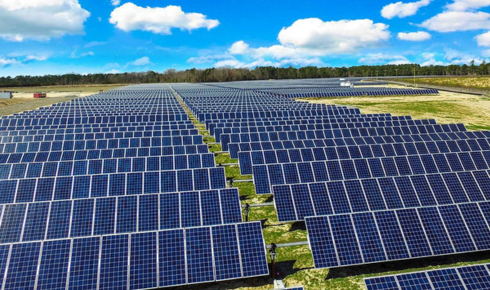Sneak Into the Solar Power Magazine to Know Everything About Solar Power

Renewable Mirror
Solar power is an infinite, renewable, and reliable energy source that does not emit harmful greenhouse gases and pollutants. The carbon footprint of solar panels is quite small as their life is around 25 years and the materials used in the panels are recycled. So, the carbon footprint becomes lesser. Energy from the sun is converted into power or electricity using photovoltaic cells. A solar power magazine includes all information related to solar power, its importance, and various forms.
How is Solar Energy Useful?
1. Renewable Source with Less Carbon Emissions
Solar energy is classified as a renewable energy source, indicating that it is inexhaustible. This form of energy is environmentally friendly, as it does not produce carbon emissions or other heat-retaining “greenhouse” gases. It circumvents the ecological harm linked to the extraction of fossil fuels through mining or drilling. Additionally, solar energy requires minimal to no water, in contrast to power plants that produce electricity via steam turbines.
2. Well Suited to Batteries
Photovoltaics primarily generate energy during the midday hours; however, with the advent of larger, more efficient, and reliable storage systems, we are now better equipped to reconcile the gap between energy demand and the natural supply from the sun. It is generally true that solar energy, especially when generated through photovoltaic technology, can be directly fed into the electricity grid. This capability facilitates the establishment of energy communities and enables both individuals and businesses to contribute their surplus energy to the market, providing them not only with savings but also a potential revenue stream.
3. Affordable
The solar industry has reached a level of maturity, and technological advancements have led to a significant reduction in prices. Federal and state tax incentives contribute to alleviating costs. Flexible payment plans and low-interest financing options have made these systems accessible to the homeowners. The elements contributing to the decrease in prices and the removal of obstacles to system installation include falling equipment costs, rebates, federal tax credits, flexible financing options, and solar leases.
4. Creates Employment Opportunities
Among all green jobs, the solar energy sector generates the highest number of employment opportunities for developers, builders, installers, and maintenance technicians at power plants. Maximizing the potential of solar energy injects fresh momentum into the economy and provides families, businesses, and even entire nations with a valuable investment opportunity. The photovoltaic sector alone is projected to create 22 million jobs globally by 2050, compared to 3.8 million in 2019, as estimated by IRENA, the International Agency for Renewable Energy.
5. Technological Versatility
The adaptability of solar energy also encompasses its technology. The initial thought that comes to mind is photovoltaic panels. However, solar energy can additionally be utilized to generate thermal energy by heating fluids, or by integrating both types in the latest thermodynamic solar power facilities. Moreover, it is important to note that, in comparison to fossil fuel systems or even numerous other renewable sources, solar energy produces minimal noise. Except for a few components necessary for cooling, both the sun’s rays and the devices employed to harness their energy operate with remarkable quietness, making them appropriate for deployment in any environment.
Conclusion
The future of solar energy looks promising as the performance of solar plants is now more reliable and durable. New technological innovations have made solar power affordable as well. For more updates on solar power in India, you can go through the solar power magazine by Renewable Mirror. It is one of India’s leading websites where you can get all the latest news related to the energy and power sector.





